olympia
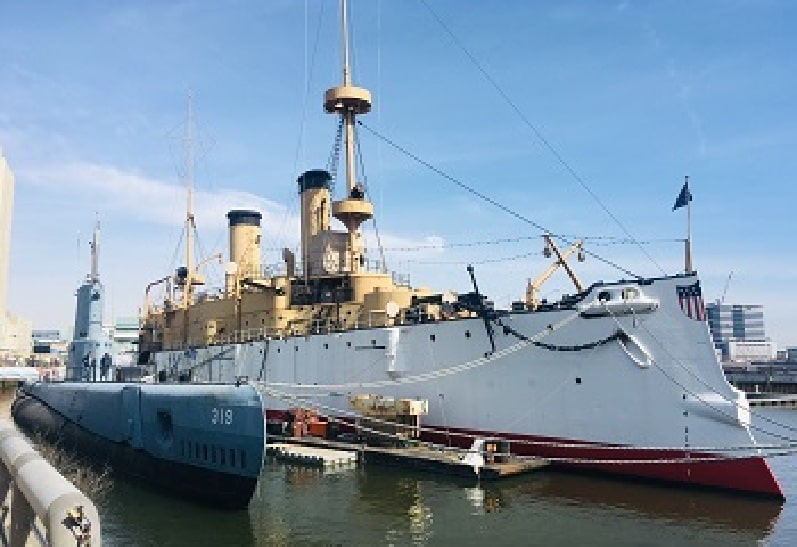
Olympia
Olympia, a nineteenth-century cruiser, was placed into service in February 1895 and is the oldest steel warship afloat in the world. She has called Philadelphia home since 1922, became a museum in 1957, and has been docked alongside Becuna at Penn’s Landing since 1976.
Climb aboard
No trip to the Independence Seaport Museum is complete without stepping onto Olympia. Follow in the footsteps of history as you experience how sailors worked and lived aboard the ship throughout her 27 years of service. Enter on her berth deck to be treated like the Senior Officer that you are while you explore where they would have slept, eaten, and worked. As you come out of Officer’s Country, you will be able to look down below and see the two steam engines in the engine room, plus visitors will walk past the machine shop, where machinists would have fabricated and repaired parts to keep the ship in working order. If you make your way to the bow of Olympia (for our landlubbers, that’s the front of the boat), you will reach the sick bay and operating room, plus you’ll get the chance to peek into the brig (that still works….just kidding!).
The main deck is your next stop. Highlights include the Captain’s lodgings, the Admiral’s Cabin and Stateroom, and the galley – complete with the GIGANTIC coffee urns that would serve coffee to the crew (they each held 45 gallons, and honestly, who hasn’t needed that much coffee before?). If you thought Officer’s Country was fancy, peek into the space that hosted dignitaries such as the then Assistant Secretary of the Navy and future president Theodore Roosevelt.
Before disembarking the cruiser, make your way to the top deck, where you can see Olympia’s bell, the Pilothouse, and a triple-wheel auxiliary helm (again, for our landlubbers, that means it helps steers the ship). Don’t miss the conning tower under the forward bridge, where you can literally stand in the footsteps of Captain Charles Gridley, who received the famous command from Commodore (later Admiral) George Dewey: “You may fire when ready, Gridley.” That order started the Battle of Manila Bay in 1898, a key event of what would become known as the Spanish-American War. Another can’t-miss spot on the ship? The memorial marker the museum unveiled in 2021 to commemorate the centennial anniversary of the American Unknown Soldier from World War I. In 1921, before being decommissioned, the ship was tasked with bringing unknown remains to Washington, D.C. from Le Havre, France. After reaching the United States, the soldier was buried at Arlington National Cemetery and was later joined on the plaza by Unknown Soldiers from other global conflicts.
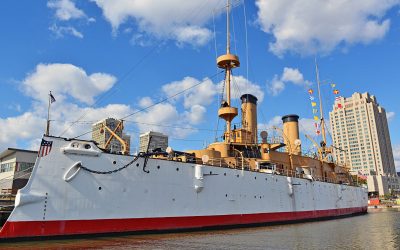
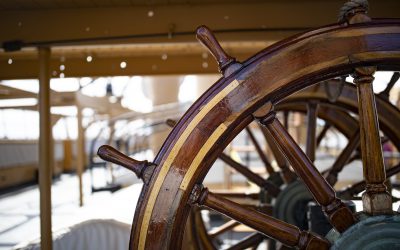
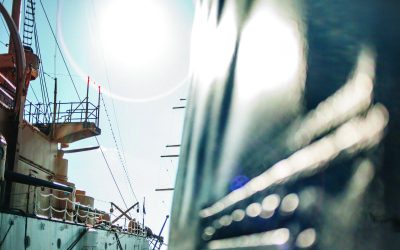
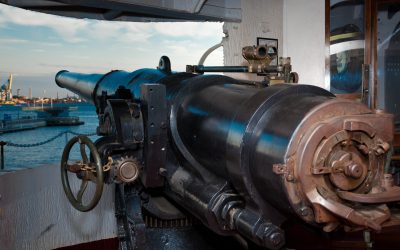
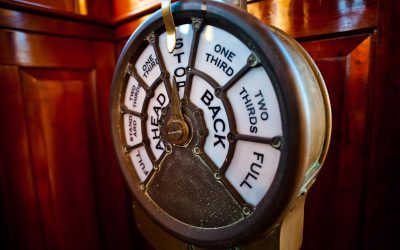
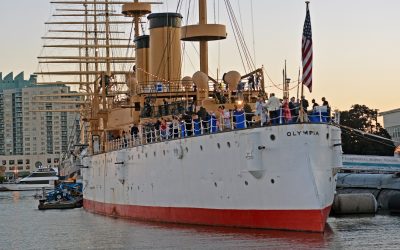
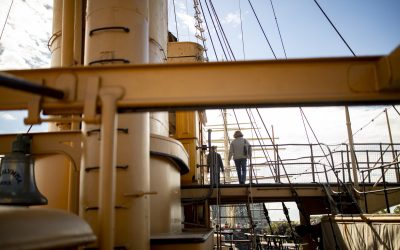
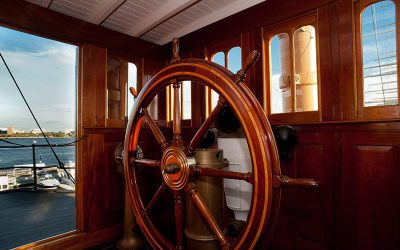
How to access olympia
Self-guided access to Olympia is included in all of the Independence Seaport Museum’s ticket packages. Guided tours of the cruiser’s engine rooms are offered in the Admiral Dewey, Explorer, and Climb Aboard packages. Please note that due to physical demands, participants must be at least ten (10) years of age to participate in the tour.
Disclaimer:
- While our building is ADA-compliant, please note that neither Olympia nor Becuna are.
- Olympia is a historic ship and, as such, does not have heat or air conditioning. We ask visitors to keep that in mind as they plan visits during what could be considered extreme temperatures. The museum will notify the public of any operational changes during extreme weather.
- For the safety of our visitors and staff, the historic ships may close without notice during inclement weather.
further reading
To learn more about the history of the United States Navy and the time Olympia served during, we recommend the following books:
- Bradford, James C., editor. Crucible of Empire: The Spanish-American War and Its Aftermath. (Annapolis, Naval Institute Press, 1993).
- Burr, Lawrence. U.S. Cruisers, 1883-1904: The Birth of the Steel Navy. (Oxford: Osprey Publishing, 2008).
- Cooling, Benjamin Franklin. U.S.S. Olympia: Herald of Empire. (Annapolis: Naval Institute Press, 2000).
- Friedman, Norman. U.S. Cruisers: An Illustrated Design History. (Annapolis: Naval Institute Press, 1984).
- Hattendorf, John B. and William P. Leeman, editors. Forging the Trident: Theodore Roosevelt and the United States Navy. (Annapolis, Naval Institute Press, 2020).
- Tisdale, John B. Three Years Behind The Guns: The True Chronicles of a Diddy-Box (Merchantville: Arx Publishing, 2017).
visit the seaport museum
Immerse yourself in award-winning and interactive exhibits and climb aboard the oldest floating steel warship in the world on Cruiser Olympia and submerge yourself aboard the World War II-era Submarine Becuna.

